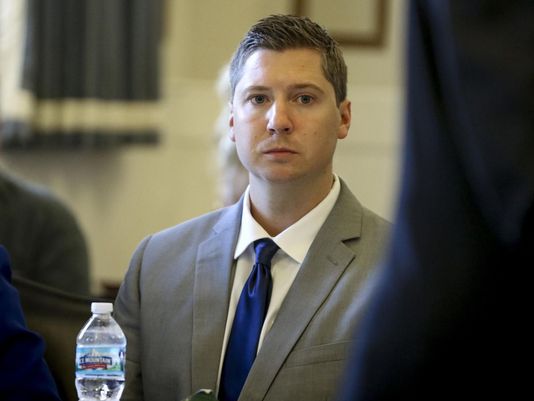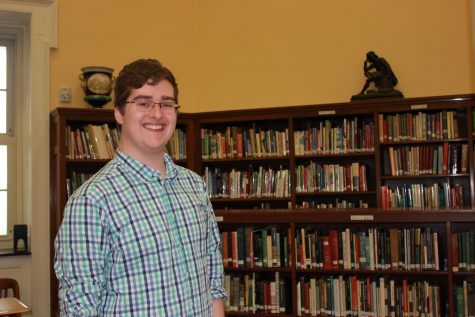Tensing case ends in mistrial, city erupts in protest

Courtesy Cara Owsley
Former Univ. of Cincinnati police officer Ray Tensing stands trial for the shooting fo Sam Dubose. The trail ended in a mistrail, but a second trail has begun.
On the afternoon of July 19, 2015, Sam Dubose was pulled over by University of Cincinnati police officer Ray Tensing. The traffic stop was standard procedure, but it escalated quickly. From his body cam and dash cam video, Tensing is seen shooting Dubose in the head, killing him instantly. This confrontation, lasting under a minute, has been debated for months by experts and citizens, and finally went to court on Nov. 1.
Through a series of testimonies and careful cross-examinations, the prosecution presented their case for the murder and voluntary manslaughter charges against Tensing. After 25 hours of deliberation, the jury could not come to a decision and the case ended in a mistrial. Attorney General Joe Deters has brought the case before trial again; the first hearing of the second trial took place on Dec. 5.The trial may have already decided its first opinion, but the court of public opinion has been hearing the case since the shooting occurred on July 19, 2015.
After the mistrial was announced on Nov. 9, dozens of protesters, many originally protesting the election of Donald Trump and others in support of Black Lives Matter, joined an ongoing protest against the result of the case.The protesters called for “Justice for Sam Dubose”, and kept protesting throughout the day. The results of the second trial are still unknown, as the trial so far is very close, and the results again may make the city erupt in protest, like it did on Nov. 9.The protests are very similar to those in Charleston, SC on Nov. 30 over the shooting of Keith Lamont Scott outside of his home.The Attorney General there chose not to charge the officer that shot Scott, sparking days of protests and riots in the city. Both of these protests signal a rising trend in American culture, specifically with African Americans, that people are fed up with discrimination in the criminal justice system.
Only time will tell if these protests will result in the change needed to fix the stem of this issue.
Your donation will support the student journalists of Walnut Hills High School. Your contribution will allow us to purchase equipment, cover our annual website hosting, printing costs and offset competition and conferences fees for students.



